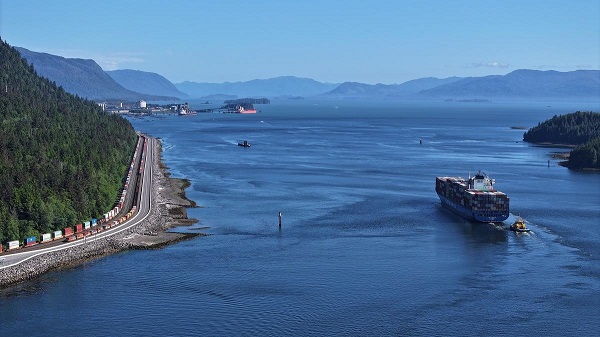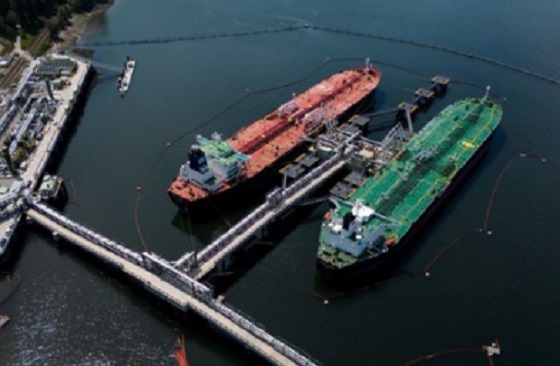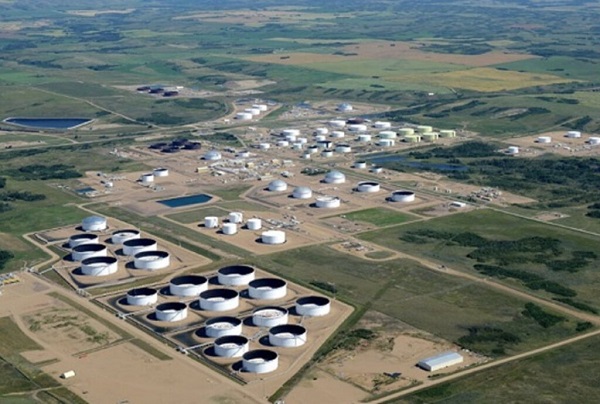Economy
What is ‘productivity’ and how can we improve it

From the Fraser Institute
Earlier this year, a senior Bank of Canada official caused a stir by describing Canada’s pattern of declining productivity as an “emergency,” confirming that the issue of productivity is now in the spotlight. That’s encouraging. Boosting productivity is the only way to improve living standards, particularly in the long term. Today, Canada ranks 18th globally on the most common measure of productivity, with our position dropping steadily over the last several years.
Productivity is the amount of gross domestic product (GDP) or “output” the economy produces using a given quantity and mix of “inputs.” Labour is a key input in the production process, and most discussions of productivity focus on labour productivity. Productivity can be estimated for the entire economy or for individual industries.
In 2023, labour productivity in Canada was $63.60 per hour (in 2017 dollars). Industries with above average productivity include mining, oil and gas, pipelines, utilities, most parts of manufacturing, and telecommunications. Those with comparatively low productivity levels include accommodation and food services, construction, retail trade, personal and household services, and much of the government sector. Due to the lack of market-determined prices, it’s difficult to gauge productivity in the government and non-profit sectors. Instead, analysts often estimate productivity in these parts of the economy by valuing the inputs they use, of which labour is the most important one.
Within the private sector, there’s a positive linkage between productivity and employee wages and benefits. The most productive industries (on average) pay their workers more. As noted in a February 2024 RBC Economics report, productivity growth is “essentially the only way that business profits and worker wages can sustainably rise at the same time.”
Since the early 2000s, Canada has been losing ground vis-à-vis the United States and other advanced economies on productivity. By 2022, our labour productivity stood at just 70 per cent of the U.S. benchmark. What does this mean for Canadians?
Chronically lagging productivity acts as a drag on the growth of inflation-adjusted wages and incomes. According to a recent study, after adjusting for differences in the purchasing power of a dollar of income in the two countries, GDP per person (an indicator of incomes and living standards) in Canada was only 72 per cent of the U.S. level in 2022, down from 80 per cent a decade earlier. Our performance has continued to deteriorate since 2022. Mainly because of the widening cross-border productivity gap, GDP per person in the U.S. is now $22,000 higher than in Canada.
Addressing Canada’s “productivity crisis” should be a top priority for policymakers and business leaders. While there’s no short-term fix, the following steps can help to put the country on a better productivity growth path.
- Increase business investment in productive assets and activities. Canada scores poorly compared to peer economies in investment in machinery, equipment, advanced technology products and intellectual property. We also must invest more in trade-enabling infrastructure such as ports, highways and other transportation assets that link Canada with global markets and facilitate the movement of goods and services within the country.
- Overhaul federal and provincial tax policies to strengthen incentives for capital formation, innovation, entrepreneurship and business growth.
- Streamline and reduce the cost and complexity of government regulation affecting all sectors of the economy.
- Foster greater competition in local markets and scale back government monopolies and government-sanctioned oligopolies.
- Eliminate interprovincial barriers to trade, investment and labour mobility to bolster Canada’s common market.
Alberta
COWBOY UP! Pierre Poilievre Promises to Fight for Oil and Gas, a Stronger Military and the Interests of Western Canada

Fr0m Energy Now
As Calgarians take a break from the incessant news of tariff threat deadlines and global economic challenges to celebrate the annual Stampede, Conservative party leader Pierre Poilievre gave them even more to celebrate.
Poilievre returned to Calgary, his hometown, to outline his plan to amplify the legitimate demands of Western Canada and not only fight for oil and gas, but also fight for the interests of farmers, for low taxes, for decentralization, a stronger military and a smaller federal government.
Speaking at the annual Conservative party BBQ at Heritage Park in Calgary (a place Poilievre often visited on school trips growing up), he was reminded of the challenges his family experienced during the years when Trudeau senior was Prime Minister and the disastrous effect of his economic policies.
“I was born in ’79,” Poilievre said. “and only a few years later, Pierre Elliott Trudeau would attack our province with the National Energy Program. There are still a few that remember it. At the same time, he hammered the entire country with money printing deficits that gave us the worst inflation and interest rates in our history. Our family actually lost our home, and we had to scrimp and save and get help from extended family in order to get our little place in Shaughnessy, which my mother still lives in.”
This very personal story resonated with many in the crowd who are now experiencing an affordability crisis that leaves families struggling and young adults unable to afford their first house or condo. Poilievre said that the experience was a powerful motivator for his entry into politics. He wasted no time in proposing a solution – build alliances with other provinces with mutual interests, and he emphasized the importance of advocating for provincial needs.
“Let’s build an alliance with British Columbians who want to ship liquefied natural gas out of the Pacific Coast to Asia, and with Saskatchewanians, Newfoundlanders and Labradorians who want to develop their oil and gas and aren’t interested in having anyone in Ottawa cap how much they can produce. Let’s build alliances with Manitobans who want to ship oil in the port of Churchill… with Quebec and other provinces that want to decentralize our country and get Ottawa out of our business so that provinces and people can make their own decisions.”
Poilievre heavily criticized the federal government’s spending and policies of the last decade, including the increase in government costs, and he highlighted the negative impact of those policies on economic stability and warned of the dangers of high inflation and debt. He advocated strongly for a free-market economy, advocating for less government intervention, where businesses compete to impress customers rather than impress politicians. He also addressed the decade-long practice of blocking and then subsidizing certain industries. Poilievre referred to a famous quote from Ronald Reagan as the modus operandi of the current federal regime.
“The Government’s view of the economy could be summed up in a few short phrases. If anything moves, tax it. If it keeps moving, regulate it. And if it stops moving, subsidize it.”
The practice of blocking and then subsidizing is merely a ploy to grab power, according to Poilievre, making industry far too reliant on government control.
“By blocking you from doing something and then making you ask the government to help you do it, it makes you reliant. It puts them at the center of all power, and that is their mission…a full government takeover of our economy. There’s a core difference between an economy controlled by the government and one controlled by the free market. Businesses have to clamour to please politicians and bureaucrats. In a free market (which we favour), businesses clamour to impress customers. The idea is to put people in charge of their economic lives by letting them have free exchange of work for wages, product for payment and investment for interest.”
Poilievre also said he plans to oppose any ban on gas-powered vehicles, saying, “You should be in the driver’s seat and have the freedom to decide.” This is in reference to the Trudeau-era plan to ban the sale of gas-powered cars by 2035, which the Carney government has said they have no intention to change, even though automakers are indicating that the targets cannot be met. He also intends to oppose the Industrial Carbon tax, Bill C-69 the Impact Assessment Act, Bill C-48 the Oil tanker ban, the proposed emissions cap which will cap energy production, as well as the single-use plastics ban and Bill C-11, also known as the Online Streaming Act and the proposed “Online Harms Act,” also known as Bill C-63. Poilievre closed with rallying thoughts that had a distinctive Western flavour.
“Fighting for these values is never easy. Change, as we’ve seen, is not easy. Nothing worth doing is easy… Making Alberta was hard. Making Canada, the country we love, was even harder. But we don’t back down, and we don’t run away. When things get hard, we dust ourselves off, we get back in the saddle, and we gallop forward to the fight.”
Cowboy up, Mr. Poilievre.
Maureen McCall is an energy professional who writes on issues affecting the energy industry.
Alberta
Alberta and Ontario sign agreements to drive oil and gas pipelines, energy corridors, and repeal investment blocking federal policies

Alberta-Ontario MOUs fuel more pipelines and trade
Alberta Premier Danielle Smith and Ontario Premier Doug Ford have signed two memorandums of understanding (MOUs) during Premier Ford’s visit to the Calgary Stampede, outlining their commitment to strengthen interprovincial trade, drive major infrastructure development, and grow Canada’s global competitiveness by building new pipelines, rail lines and other energy and trade infrastructure.
The two provinces agree on the need for the federal government to address the underlying conditions that have harmed the energy industry in Canada. This includes significantly amending or repealing the Impact Assessment Act, as well as repealing the Oil Tanker Moratorium Act, Clean Electricity Regulations, the Oil and Gas Sector Greenhouse Gas Emissions Cap, and all other federal initiatives that discriminately impact the energy sector, as well as sectors such as mining and manufacturing. Taking action will ensure Alberta and Ontario can attract the investment and project partners needed to get shovels in the ground, grow industries and create jobs.
The first MOU focuses on developing strategic trade corridors and energy infrastructure to connect Alberta and Ontario’s oil, gas and critical minerals to global markets. This includes support for new oil and gas pipeline projects, enhanced rail and port infrastructure at sites in James Bay and southern Ontario, as well as end-to-end supply chain development for refining and processing of Alberta’s energy exports. The two provinces will also collaborate on nuclear energy development to help meet growing electricity demands while ensuring reliable and affordable power.
The second MOU outlines Alberta’s commitment to explore prioritizing made-in-Canada vehicle purchases for its government fleet. It also includes a joint commitment to reduce barriers and improve the interprovincial trade of liquor products.
“Alberta and Ontario are joining forces to get shovels in the ground and resources to market. These MOUs are about building pipelines and boosting trade that connects Canadian energy and products to the world, while advocating for the right conditions to get it done. Government must get out of the way, partner with industry and support the projects this country needs to grow. I look forward to working with Premier Doug Ford to unleash the full potential of our economy and build the future that people across Alberta and across the country have been waiting far too long for.”
“In the face of President Trump’s tariffs and ongoing economic uncertainty, Canadians need to work together to build the infrastructure that will diversify our trading partners and end our dependence on the United States. By building pipelines, rail lines and the energy and trade infrastructure that connects our country, we will build a more competitive, more resilient and more self-reliant economy and country. Together, we are building the infrastructure we need to protect Canada, our workers, businesses and communities. Let’s build Canada.”
These agreements build on Alberta and Ontario’s shared commitment to free enterprise, economic growth and nation-building. The provinces will continue engaging with Indigenous partners, industry and other governments to move key projects forward.
“Never before has it been more important for Canada to unite on developing energy infrastructure. Alberta’s oil, natural gas, and know-how will allow Canada to be an energy superpower and that will make all Canadians more prosperous. To do so, we need to continue these important energy infrastructure discussions and have more agreements like this one with Ontario.”
“These MOUs with Ontario build on the work Alberta has already done with Saskatchewan, Manitoba, Northwest Territories and the Port of Prince Rupert. We’re proving that by working together, we can get pipelines built, open new rail and port routes, and break down the barriers that hold back opportunities in Canada.”
“Canada’s economy has an opportunity to become stronger thanks to leadership and steps taken by provincial governments like Alberta and Ontario. Removing interprovincial trade barriers, increasing labour mobility and attracting investment are absolutely crucial to Canada’s future economic prosperity.”
Together, Alberta and Ontario are demonstrating the shared benefits and opportunities that result from collaborative partnerships, and what it takes to keep Canada competitive in a changing world.
Quick facts
- Steering committees with Alberta and Ontario government officials will be struck to facilitate work and cooperation under the agreements.
- Alberta and Ontario will work collaboratively to launch a preliminary joint feasibility study in 2025 to help move private sector led investments in rail, pipeline(s) and port(s) projects forward.
- These latest agreements follow an earlier MOU Premiers Danielle Smith and Doug Ford signed on June 1, 2025, to open up trade between the provinces and advance shared priorities within the Canadian federation.
Related information
-

 Business2 days ago
Business2 days agoRFK Jr. says Hep B vaccine is linked to 1,135% higher autism rate
-

 Business1 day ago
Business1 day agoWhy it’s time to repeal the oil tanker ban on B.C.’s north coast
-

 Alberta1 day ago
Alberta1 day agoAlberta Provincial Police – New chief of Independent Agency Police Service
-

 Energy1 day ago
Energy1 day agoIf Canada Wants to be the World’s Energy Partner, We Need to Act Like It
-

 Alberta1 day ago
Alberta1 day agoPierre Poilievre – Per Capita, Hardisty, Alberta Is the Most Important Little Town In Canada
-

 International1 day ago
International1 day agoCBS settles with Trump over doctored 60 Minutes Harris interview
-

 Aristotle Foundation1 day ago
Aristotle Foundation1 day agoHow Vimy Ridge Shaped Canada
-

 Alberta23 hours ago
Alberta23 hours agoAlberta uncorks new rules for liquor and cannabis





